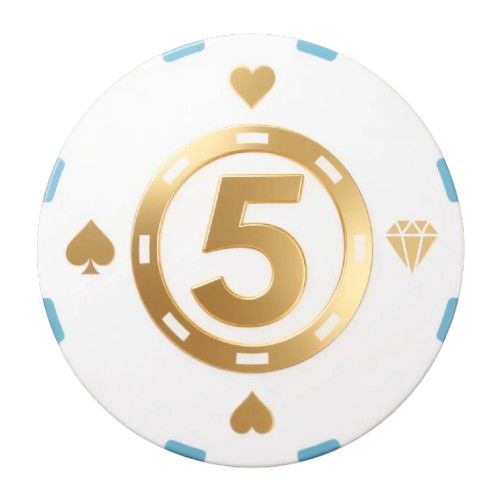The Evolution of Slot Game Design From 2010 to 2025
Over the last decade and a half, slot games have transformed from simple digital representations of classic fruit machines into complex, story-driven experiences that blend mathematical models with cinematic visuals. The period between 2010 and 2025 represents one of the fastest evolutions in gambling technology—driven by creative innovation, changing player psychology, and rapid advances in mobile and web architecture. Understanding how slot design evolved reveals how human behavior and technology shaped an entire industry, redefining what entertainment means inside the online casino ecosystem.
2010–2013: The Dawn of Browser Slots
In the early 2010s, online casinos heavily relied on Flash technology. Slots largely mimicked physical machines—three or five reels, static paytables, and minimal interaction. Designs were simple because bandwidth and processor limits constrained how much could appear on screen. Most studios reused animations, relying on nostalgic fruit symbols, BAR icons, or basic scatter bonuses.
Still, two major changes began emerging. First, the introduction of progressive jackpots like Mega Moolah and Hall of Gods turned slot gaming from a niche pastime into a global attraction. Second, developers started adopting RNG certification and fair-play testing, gradually earning player trust and regulatory legitimacy. What slots lacked in aesthetics, they began compensating for with credibility.
2014–2017: The HTML5 Revolution
The death of Flash brought a wave of creative freedom. HTML5 technology allowed developers to create smoother, faster-loading games compatible across mobile and desktop devices without plug-ins. This technical leap fundamentally changed how designers thought: mobile-first became the new mantra.
Developers such as NetEnt, Microgaming, and Quickspin began to focus on experience design instead of mechanical gameplay. Immersive backgrounds, full-screen animations, and thematic music gave every slot a narrative identity. For the first time, games could adapt to various screen orientations, letting players spin comfortably on smartphones.
Innovation was no longer about adding paylines; it was about designing immersion. Studios experimented with cinematic intros, storytelling symbols, and bonus rounds that felt like mini-games inside the game itself.
2018–2020: Data and Psychology Meet Aesthetics
By the late 2010s, slot studios started leveraging analytics and player behavior data to fine-tune engagement. Volatility simulations, retention forecasts, and real-time telemetry shaped every creative decision. Instead of guessing what players might like, developers could test features against databases of millions of spins.
Several key trends emerged in this phase:
- The rise of cluster mechanics, pioneered by titles like Reactoonz and Jammin’ Jars, moving away from traditional paylines.
- Feature buy options, giving impatient players direct access to bonuses.
- Variable RTP models, allowing casinos to tailor return percentages to their markets.
At the same time, themes grew more sophisticated. Ancient mythology, sci-fi, and fantasy worlds became the new gold standard, reflecting mainstream gaming influences. The line between video games and slot machines started to fade.
2021–2023: The Era of Streaming and Community Influence
When live-streaming exploded on platforms like Twitch and Kick, casino culture gained a public face. Streamers became the new ambassadors of slot games, indirectly shaping design philosophy. Developers took visual drama and emotional pacing into account: long build-ups, epic bonus entries, and volatile swings timed perfectly for live audiences.
Slot art direction also leaned into watchability. Big multipliers, bold pop-up animations, and bursting audio feedback catered to streaming attention spans. Meanwhile, studios began building APIs and game modes specifically optimized for affiliates and streamers.
Another quiet revolution occurred in architecture—server-based gaming. Games no longer needed to store logic locally; instead, they ran entirely through cloud-connected engines, allowing instant updates and cross-brand customization. This gave rise to adaptive tournaments and synchronized progressive events that linked players across different casinos in real time.
2024–2025: Towards Immersive and Ethical Design
By 2024, the boundaries of slot game design reached new levels of realism and responsibility. The industry matured, embracing two opposite yet complementary directions—immersion and ethical transparency. Modern players demanded visual excellence, fairness, and responsible mechanics.
Technologies shaping the new era include:
- AI-assisted design tools that dynamically adjust difficulty and volatility for balance.
- 3D animation pipelines using Unreal Engine and Unity, bringing near-console-quality visuals.
- Transparent game info panels displaying RTP, hit frequency, and variance metrics upfront.
- Responsible gaming integrations that monitor player behavior for signs of risk.
These innovations weren’t simply about aesthetics—they reflected cultural maturity. The new generation of slot players values authenticity, storytelling, and fairness as much as they value big wins. Studios now treat slot creation as a craft combining mathematics, art, and ethics.
How Player Expectations Redefined Design Philosophy
Between 2010 and 2025, one consistent force behind every change was shifting player psychology. Players became more informed, mobile, and time-conscious. Instead of chasing only jackpots, they began seeking entertainment value per minute—how engaging a session feels, not just how much it pays.
Developers responded by designing deeper emotional loops:
- smoother pacing between spins and bonus rounds
- risk‑reward balance calibrated to excitement levels
- music and visuals matched to dopamine cycles
The modern slot machine is not built for addiction but engagement. The best studios now apply behavioral science responsibly, aiming to maintain excitement while promoting control and awareness—something unimaginable a decade ago.
The Future Beyond 2025
Looking ahead, the next phase of slot evolution seems already visible. Expect mixed-reality integration where mobile AR overlays blend the real and virtual, and blockchain-backed transparency where every spin outcome becomes verifiable on public ledgers. As regulation evolves, design will balance immersion with accountability.
For industry veterans, the transformation from 2010’s static fruit machines to 2025’s cinematic slot worlds feels almost unbelievable. Yet every technological and artistic leap speaks to one enduring truth: slot games may change in shape, speed, and intensity, but they still rely on the same universal formula—mathematical fairness wrapped in the timeless appeal of chance and reward.
The evolution continues, reshaping entertainment one spin at a time.

Leave a Reply